In 2022, a new statue was unveiled in the U.S. Capitol’s Statuary Hall to represent the state of Florida. The statue depicts Mary McLeod Bethune (1875-1955), educator, civil rights activist, and the first African American to be represented in the official Statuary Hall collection.
Throughout her life, the press could not ignore Mary McLeod Bethune. She made the large headlines and the small society notes. Her speeches always inspired audiences and her work bore real change in the world. From the humblest of beginnings, Bethune was born to formerly enslaved parents and was the first of her siblings to learn how to read. Biographies of her early life are featured in two comics books in the Library’s collections, and one of them was printed while she was still living.
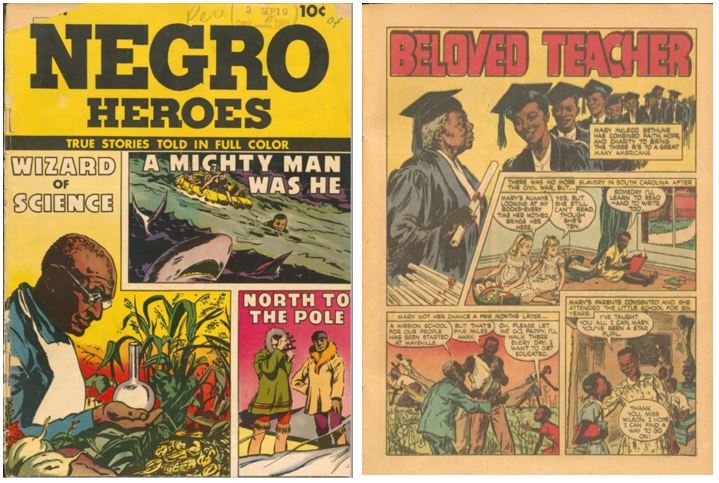
Negro Heroes was published by the National Urban League, a civil rights organization founded in 1910. The series ran for two issues and included non-fiction stories and biographies of noteworthy African Americans.
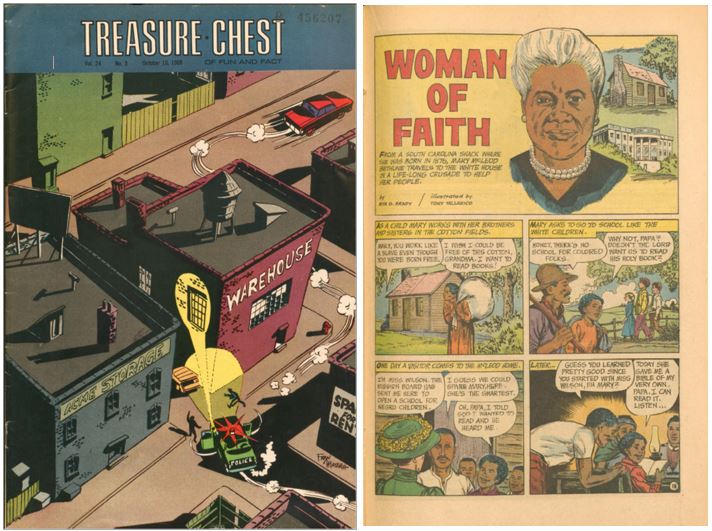
Treasure Chest of Fun and Fact was a Catholic publication that mixed humorous comic strips and short fiction with educational and non-fictional stories.
While these comic books focus on her early life and hint at the later accomplishments, greater details of Bethune’s incredible career can be found in the newspapers of Chronicling America.*
Daytona Normal and Industrial Institute for Negro Girls
Founded in Florida in 1904, Bethune started the Daytona Normal and Industrial Institute for Negro Girls in incredible circumstances. Today the school is the Bethune-Cookman University.
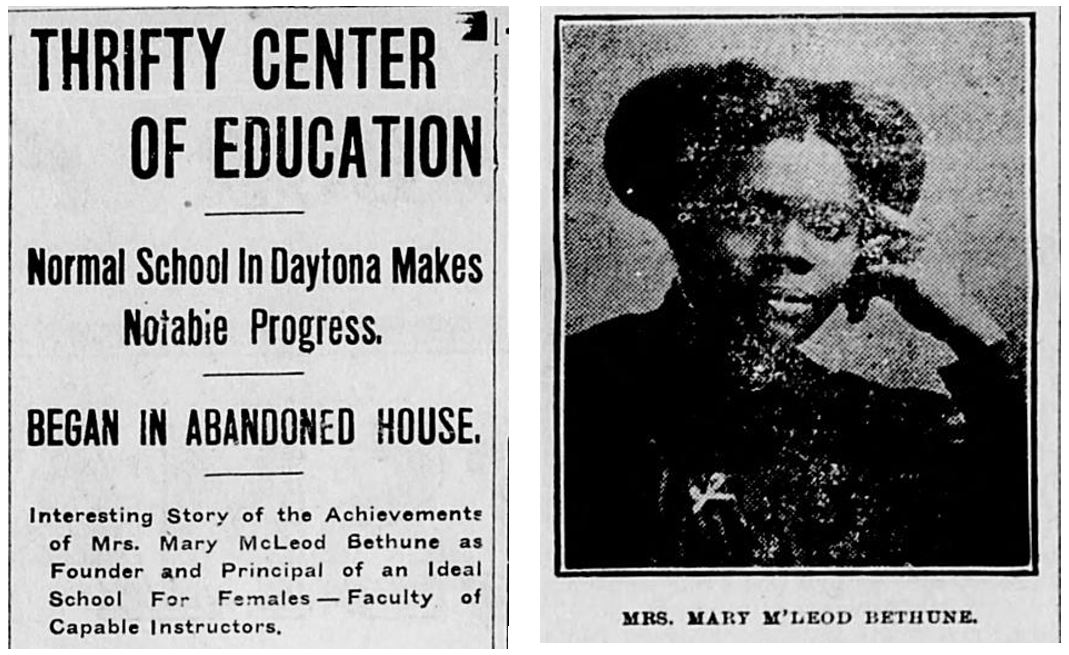
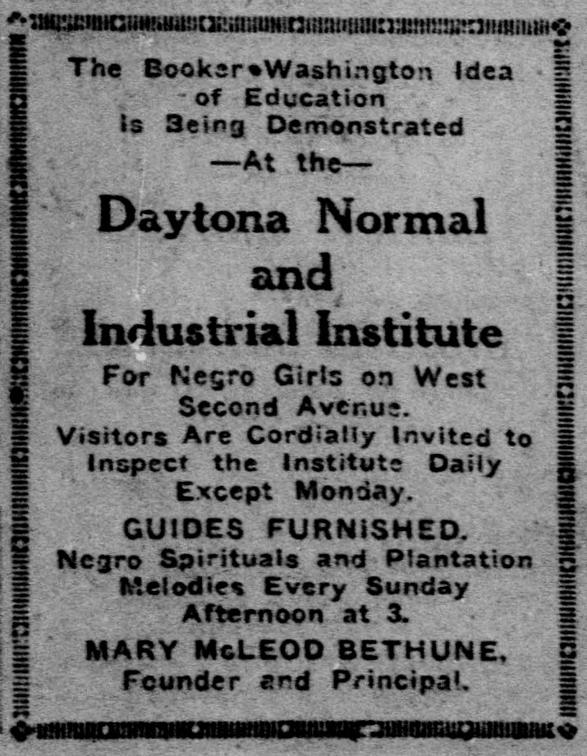
National Council of Negro Women
In 1935, Bethune founded the National Council of Negro Women (NCNW), a civil rights group that strengthened the connections between separate organizations dedicated to empowering Black women.
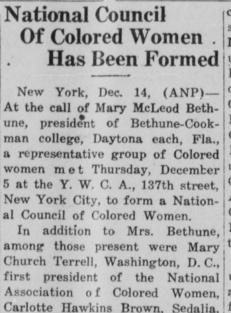
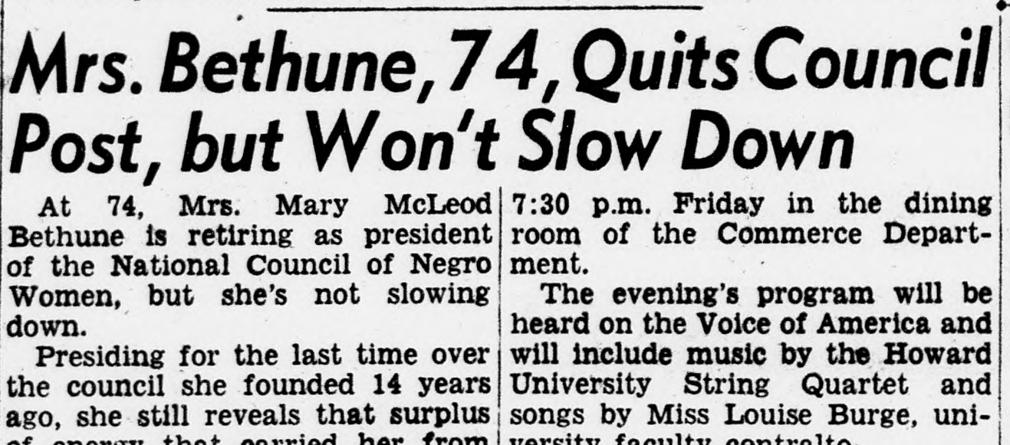
National Youth Administration
In 1936, Bethune was appointed by President Franklin Delano Roosevelt to the position of Director of Negro Affairs within one of his New Deal programs: the National Youth Administration (NYA). The program set up avenues for training and employment for young adults not in school. Bethune traveled all over the United States visiting the local NYA programs, giving speeches that counseled, encouraged, and inspired.
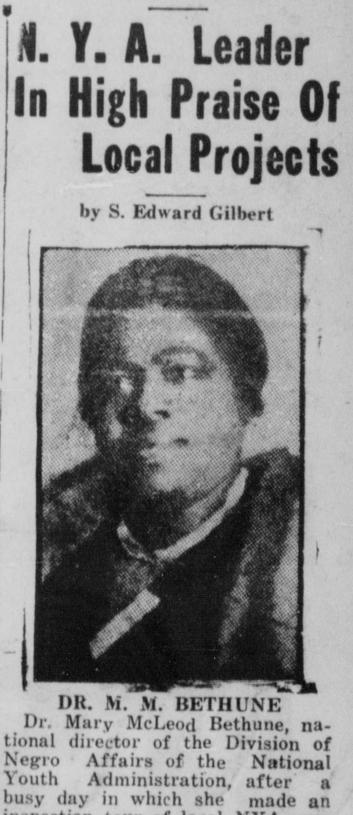
Friendship with Eleanor Roosevelt
In the 1930s and 40s, Bethune’s work brought her into many of the same circles as First Lady Eleanor Roosevelt. Not only were they personal friends, but also very publicly supported each other’s work and frequently appeared together at official events. The photo caption in the Jackson Advocate (below) refers to them as “America’s two first ladies.”
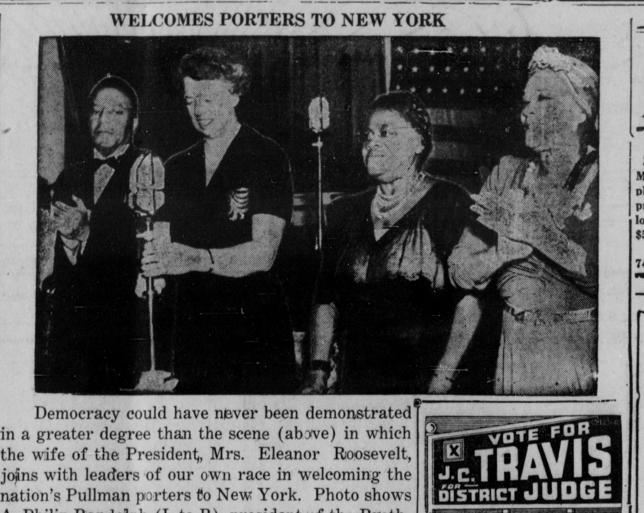
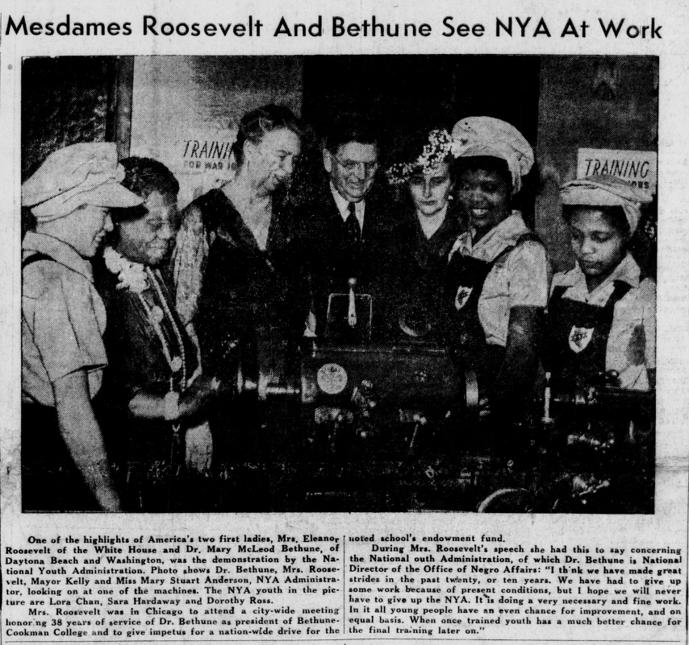
Women’s Army Corps (WAC)
During World War II, Bethune served on the National Civilian Advisory Committee of the Women’s Army Corps, an army unit for women to serve in noncombat positions. Though the Corps had segregated battalions and barracks, she lobbied for Black WACs to be included in officer training.
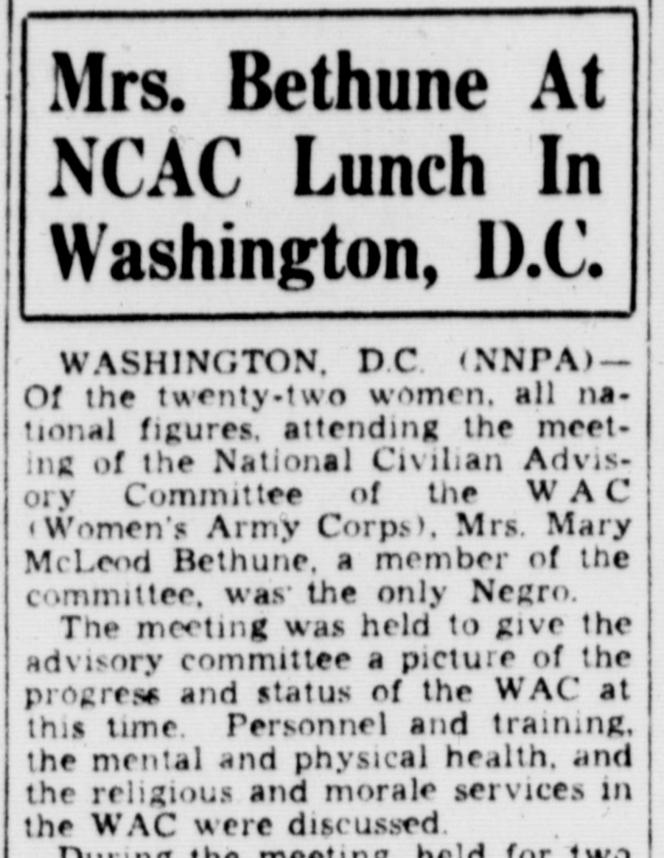
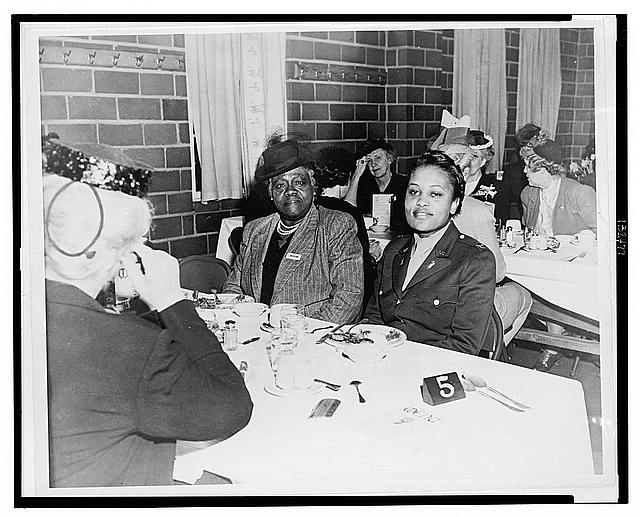
United Nations Conference
In 1945, Bethune was one of three delegates from the National Association of the Advancement of Colored People (NAACP) to attend the preliminary United Nations conference to draft the charter.
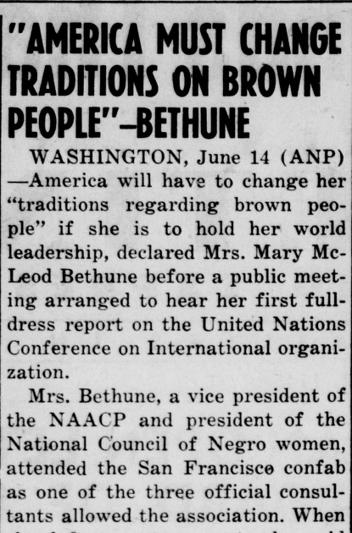
Newspaper Columnist
Bethune regularly contributed a column titled “From Day to Day” in the Pittsburgh Courier (PA) from 1937 till 1938. She also had her own column in the Chicago Defender (IL) from 1948 till her death in 1955. These titles are available at the Library of Congress on microfilm and by subscription database.
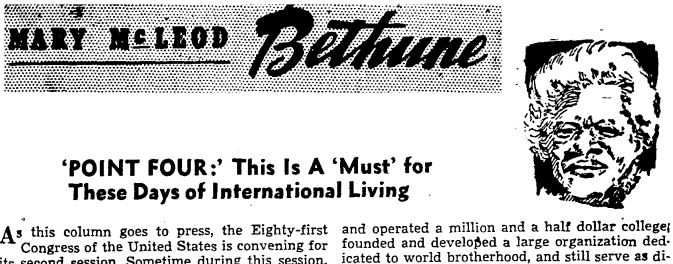
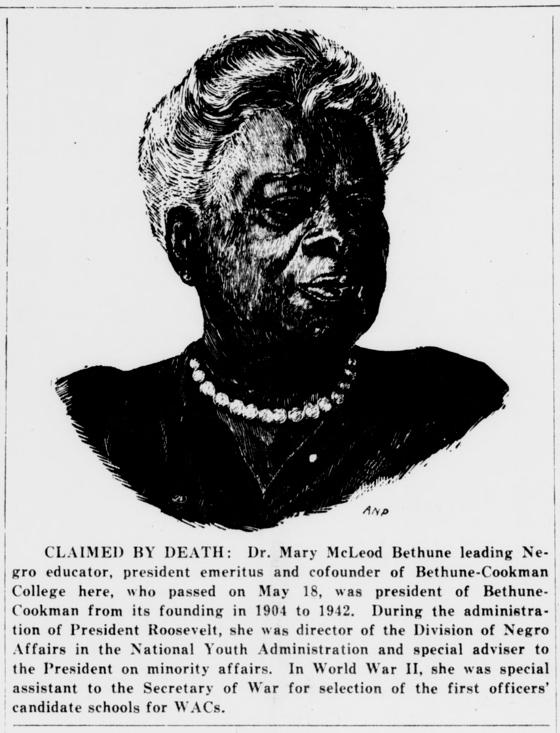
Discover More
Today in History: Mary McLeod Bethune
Mary Church Terrell was another civil rights activist in the circles of Mary McLeod Bethune. Search for their correspondence in the digitized papers of Mary Church Terrell held by the Manuscript Division.
See video and audio collections about Mary McLeod Bethune featured on the Now See Hear! blog of the National Audio-Visual Conservation Center (NAVCC).
An annotated bibliography of Mary McLeod Bethune’s Chicago defender columns, 1948-1955 by Carolyn LaDelle Bennett (2001).
* The Chronicling America historic newspapers online collection is a product of the National Digital Newspaper Program and jointly sponsored by the Library and the National Endowment for the Humanities.
Follow Chronicling America on X @ChronAmLOC
Click here to subscribe to Headlines & Heroes and never miss a post.